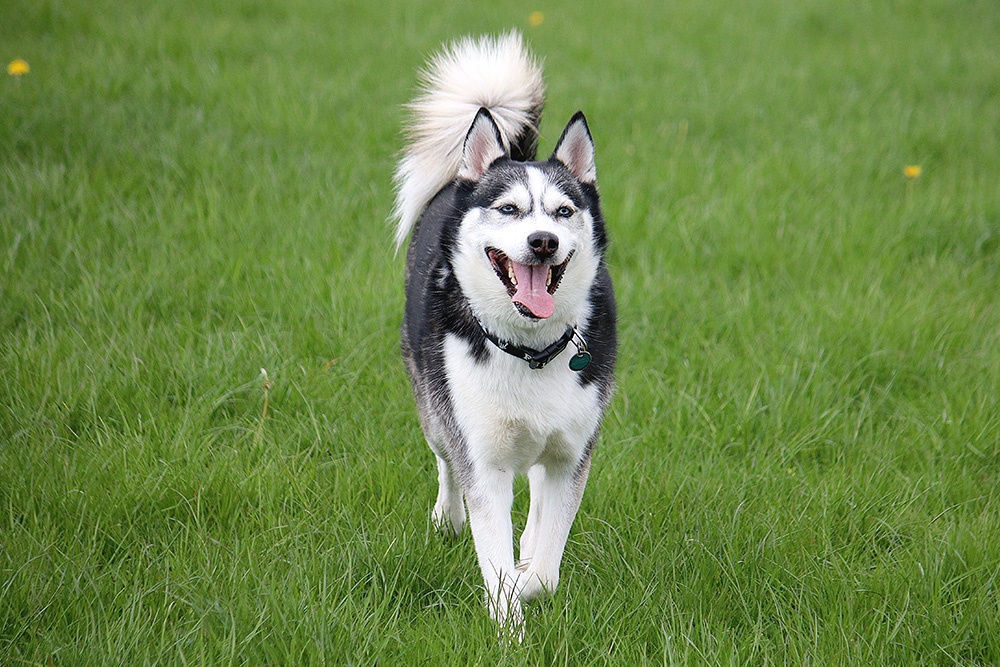Generally, dog diseases in Huskies are caused by a vast number of factors. These factors include hypophosphatemia, arthritis, and Von Willebrand disease. Some of the other causes include epilepsy, hair loss, and Corneal dystrophy.
Let’s review each of the condition.
Von Willebrand disease
Among the bleeding disorders in dogs, Von Willebrand disease is the most common. In this disease, the von Willebrand factor, a protein in the blood, is missing or defective. This factor helps the platelets stick together to clot blood when an injury occurs.
Von Willebrand disease can be mild or severe. A mild form may go undiagnosed for years. In a severe form, the dog may hemorrhage from the mouth or nose. The dog may also have bloody urine.
Von Willebrand disease can be diagnosed by a blood test or DNA test. The doctor will need to take a careful history and perform a physical examination. If the dog is undergoing surgery, the doctor may recommend a blood transfusion to prevent excessive bleeding.
Arthritis
Among all the health problems a Husky can suffer from, joint disease is the most common and often painful. There are several types of arthritis, and treatment can vary depending on the condition.
Osteoarthritis is the most common form of arthritis in dogs. The condition causes damage to the cartilage that provides a smooth surface for joints. A dog with osteoarthritis may experience decreased energy and willingness to play.
In some cases, osteoarthritis can also lead to bony growths around the affected joint. These bony growths increase the pain in the joint.
There are also joint supplements available to help improve joint health. These supplements can help extend the life of a arthritic dog.
Corneal dystrophy
Several breeds of dogs are at a high risk for corneal dystrophy. Although corneal dystrophy usually does not affect the dog’s vision, it can lead to painful corneal ulcers.
The disease is caused by an abnormality in fat metabolism. In some cases, the buildup of material in the cornea can result in opacity. These deposits can be calcium or cholesterol.
Corneal dystrophies are usually unilateral, meaning they occur in one eye. However, they can be bilateral. Some dogs are affected early in life, while others do not develop symptoms until later.
In some cases, the corneal dystrophy will resolve on its own. However, there may be a need for surgery to remove the lesions. A superficial keratectomy is sometimes used to remove the outer layer of the cornea.
Click here – Zorb Ball Complete Guide Where To Buy
Epilepsy
Whether your dog is suffering from epilepsy, brain cancer, or a stroke, there are many tools available to help you manage the condition. Your veterinarian will determine the best course of treatment for your pet’s condition.
When your dog is experiencing a seizure, he or she may become recumbent, or appear to stare into space. The dog may also be disoriented and confused. This can be a life-threatening condition. Your veterinarian should be consulted as soon as possible if your dog appears to be in distress.
There are two main types of epileptic seizures in dogs: focal and generalized. Focal seizures occur when abnormal electrical activity occurs in only part of the brain. In a focal seizure, your dog may exhibit unusual movements in one limb, or may appear to chew gum.
Hypophosphatemia
Several studies have been conducted on hypophosphatemia in humans and dogs. In the present study, the incidence of hypophosphatemia in dogs was evaluated. The goal of the study was to determine whether hypophosphatemia was associated with an increased risk of non-survival.
The prevalence of hypophosphatemia in dogs with presumptive sepsis was estimated using a systematic approach. The study included dogs with various underlying conditions, including respiratory tract infections, urinary tract infections, and musculoskeletal conditions. The data were collected from 4,406 case records with the diagnosis of infection.
The majority of the dogs in the presumptive sepsis group had documented infection. However, many did not have a measured phosphate concentration. Several possible reasons for this were investigated. One possible reason was financial constraints. This might have prevented serum biochemistry analysis.
Click here – Market Your Toy Store Holiday Sale In 4 Easy Steps
Hair loss
Whether your dog suffers from congenital hair loss or an endocrine disorder, there are various causes for dog disease causes hair loss. The underlying cause will determine the best treatment.
One common cause for dog disease causes hair loss is bacterial follicular infection. These infections are caused by a buildup of bacteria that can lead to a number of skin changes. If the infection spreads to other areas of the dog’s skin, it can cause additional baldness. If your dog is infected with a bacterial follicular infection, you may need to treat it with antibiotics.
Another common cause for dog disease causes hair loss is parasites. These diseases can lead to intense itching and discomfort. These conditions should be treated by your veterinarian. They may also require medications to relieve discomfort and pain.
Conclusion
Huskies are smart dogs and make good family pets. If you take good care of your Husky friend, you will be rewarded with loyalty, love and fun.
Make sure you provide him with a good environment, plenty of exercise and premium quality food and you will have a healthy Husky for a long time!
